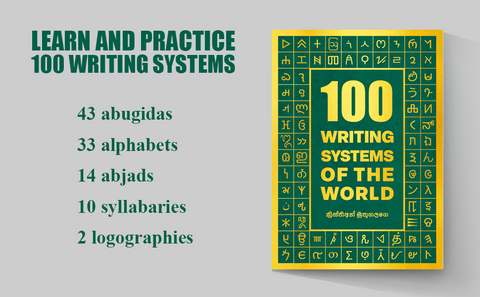Decoding the Secrets of the Egyptian Hieroglyphic Script: Unraveling Ancient Mysteries
1. Script type: The Egyptian hieroglyphic script is a complex writing system that combines logographic, syllabic, and alphabetic elements. It is characterized by intricate pictorial symbols representing objects, sounds, and concepts.
2. Writing direction: The hieroglyphic script can be written in different directions, including left to right, right to left, and top to bottom. The direction of the text depends on the arrangement and orientation of the symbols.
3. Creator and invention time: The exact creator of the Egyptian hieroglyphic script is unknown, as it developed organically over centuries. Its origins can be traced back to around 3200 BCE during the Early Dynastic Period in ancient Egypt.
4. Time period of use: The hieroglyphic script was in use for over 3,000 years, spanning various periods of ancient Egyptian history. It flourished during the Old Kingdom (2700-2200 BCE) and continued to be used until the end of the Ptolemaic Period (30 BCE).
5. Population and current usage: The Egyptian hieroglyphic script is no longer actively used by any population today. It fell out of use with the decline of ancient Egyptian civilization and the rise of other writing systems in the region.
6. Usage area: Geographically, the hieroglyphic script was used primarily in ancient Egypt, along the banks of the Nile River. It served as the official script of the Pharaohs, priests, and scribes, permeating all aspects of ancient Egyptian society.
7. Languages associated with the script: The hieroglyphic script was used to write the ancient Egyptian language, which had several phases and variations over the centuries. It is one of the oldest recorded languages in the world.
Interesting Facts:
- The word "hieroglyph" comes from the Greek words "hieros" (sacred) and "glyphein" (to carve), reflecting the script's sacred and carved nature.
- Hieroglyphs were not solely used for writing religious or ceremonial texts but also for everyday communication, monumental inscriptions, and administrative documents.
- The decipherment of the Egyptian hieroglyphic script was a major breakthrough in the field of Egyptology. French scholar Jean-François Champollion is credited with deciphering the script in the early 19th century.
- The script comprises over 1,000 individual hieroglyphic symbols, representing a wide range of concepts, including objects, animals, people, and abstract ideas.
- Hieroglyphic inscriptions provide valuable insights into ancient Egyptian history, culture, religion, and daily life. They document achievements, mythology, rituals, and the lives of pharaohs and common people.
- The hieroglyphic script influenced other writing systems in the ancient Near East, such as the Proto-Sinaitic and Phoenician scripts, which in turn gave rise to modern alphabets.
- The Rosetta Stone, discovered in 1799, played a pivotal role in deciphering the hieroglyphic script. It provided a crucial bilingual text in Greek and Egyptian hieroglyphs, allowing for comparative analysis.
The Egyptian hieroglyphic script remains an enigmatic symbol of ancient Egyptian civilization. Its timeless appeal captivates scholars, archaeologists, and enthusiasts alike, offering a window into the ancient world. By exploring the complex web of hieroglyphs, we can unlock the stories and wisdom of an extraordinary civilization that continues to fascinate and inspire us today.

Practice Egyptian hieroglyphs and other scripts with our book "100 Writing Systems of the World"!
Discover 100 diverse writing systems from around the globe in one captivating book. Practice writing different scripts with full character charts and essential information provided. Let your imagination soar on the blank right pages as you explore 43 abugidas, 33 alphabets, 14 abjads, 10 syllabaries, and 2 logographic scripts. Dive into numeral systems and even design your own writing system. Immerse yourself in the beauty and diversity of global scripts today with "100 Writing Systems of the World." Unleash your creativity and order now!
